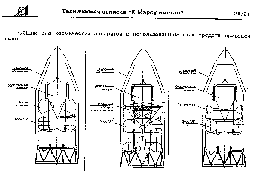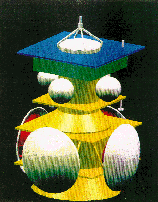

MARS TOGETHER: AN UPDATE
The United States and Russia have been studying the potential for joint missions to Mars for over a year. Many hoped that a collaborative mission to Mars could be mounted as early as the 1998 opportunity with a combined Russian and American space vehicle launched by a Russian booster. A joint technical team of Russian and American engineers and scientists have been pursuing this challenge, most recently in Moscow at the end of March. At that point, three options were on the table for a 1998 collaborative mission: All had a Molniya launcher and a US orbiter, but each had a different Russian component.

In late April and early May, leaders of the Russian and American space science programs met in Washington to assess the situation. Both sides expressed strong interest in long term and intimate joining of their respective Mars exploration programs. They also agreed that studies had not progressed far enough that a commitment to a joint 1998 mission would be prudent. This does not, however, prevent a lower level of cooperation in 1998. NASA and the Institute of Space Research of the Russian Academy of Science (IKI) are actively working on the possibility of Russian instruments flying on the US 1998 Mars Surveyor lander or orbiter. A US team went to Moscow in June to work the details.
And what about the future? The recent Russian/NASA resolve looks toward consideration of joint missions starting in 2001. The concept introduced for 1998 may prove attractive for 2001. The basic idea is that a Russian Molniya launch vehicle would carry a stack of two vehicles, one Russian and one American. Russia continues to harbor strong interest in both the Marsokhod rover and a long range balloon.

A descent module that will fit on the Molniya and can contain either of these payloads is under development in Russia, but it needs a carrier to provide navigation, power and telemetry on the long cruise from Earth to Mars. In principle, those functions could be provided by a companion US spacecraft, either an orbiter or lander. A brief study of this arrangement was made in the spring of 1995 and there did not appear to be any obstacles. Later this year, the Russian/American team will be reconstituted and studies resumed.
Were the 1994-95 studies of a joint 98 mission all for naught? Hardly! A very important result was the building of relationships. In the Soviet era, Russian and American space scientists and engineers worked in isolation. Their techniques for mounting major space endeavors grew up independently and took different evolutionary paths. With the Cold War behind us, and prospective merging of the two programs, a major challenge to both sides is finding mechanisms to productively work together. And the first step toward common understanding is mutual trust. The recent studies have contributed to establishing that trust.
--Roger D. Bourke





